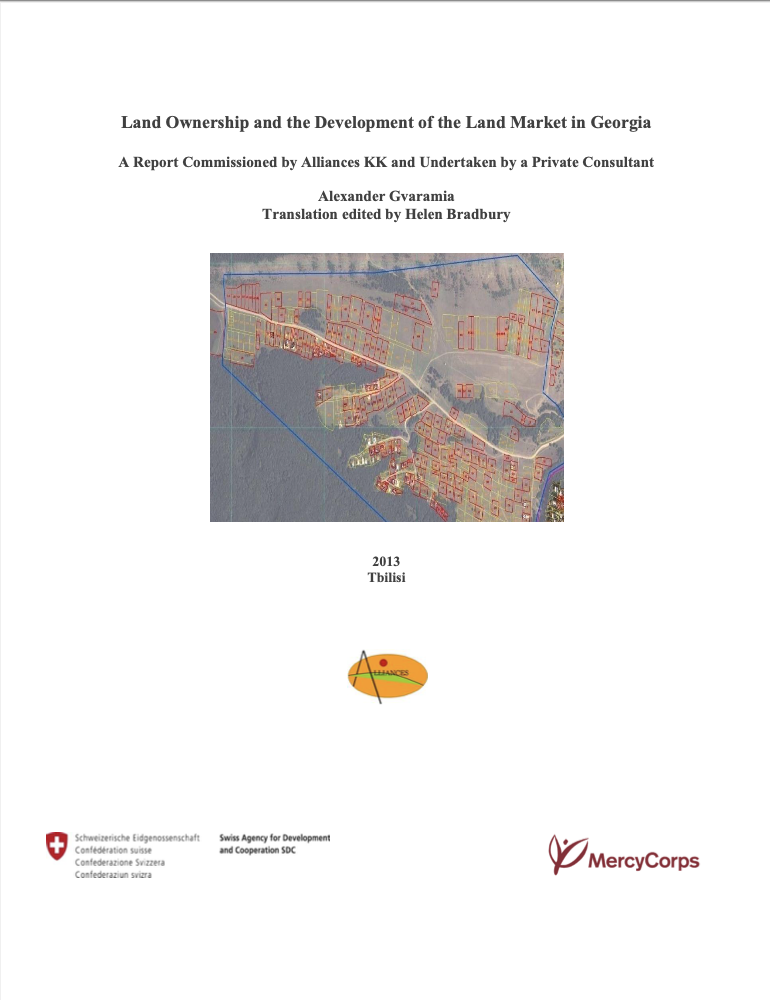Land Ownership and the Development of the Land Market in Georgia
This report was produced by a private consultant Alexander Gvaramia a legal expert on land laws and issues and a member of the Swiss Development Cooperation funded Mercy Corps Georgia implemented Alliances Kvemo Kartli Programme, Helen Bradbury, a market development programme working in the dairy, beef and sheep value chains in Dmanisi, Tetritskaro and Tsalka municipalities of Kevmo Kartli. The International Centre for Conflict Negotiation (ICCN) a partner of Alliances KK was responsible for facilitating the concept and production of the report.




